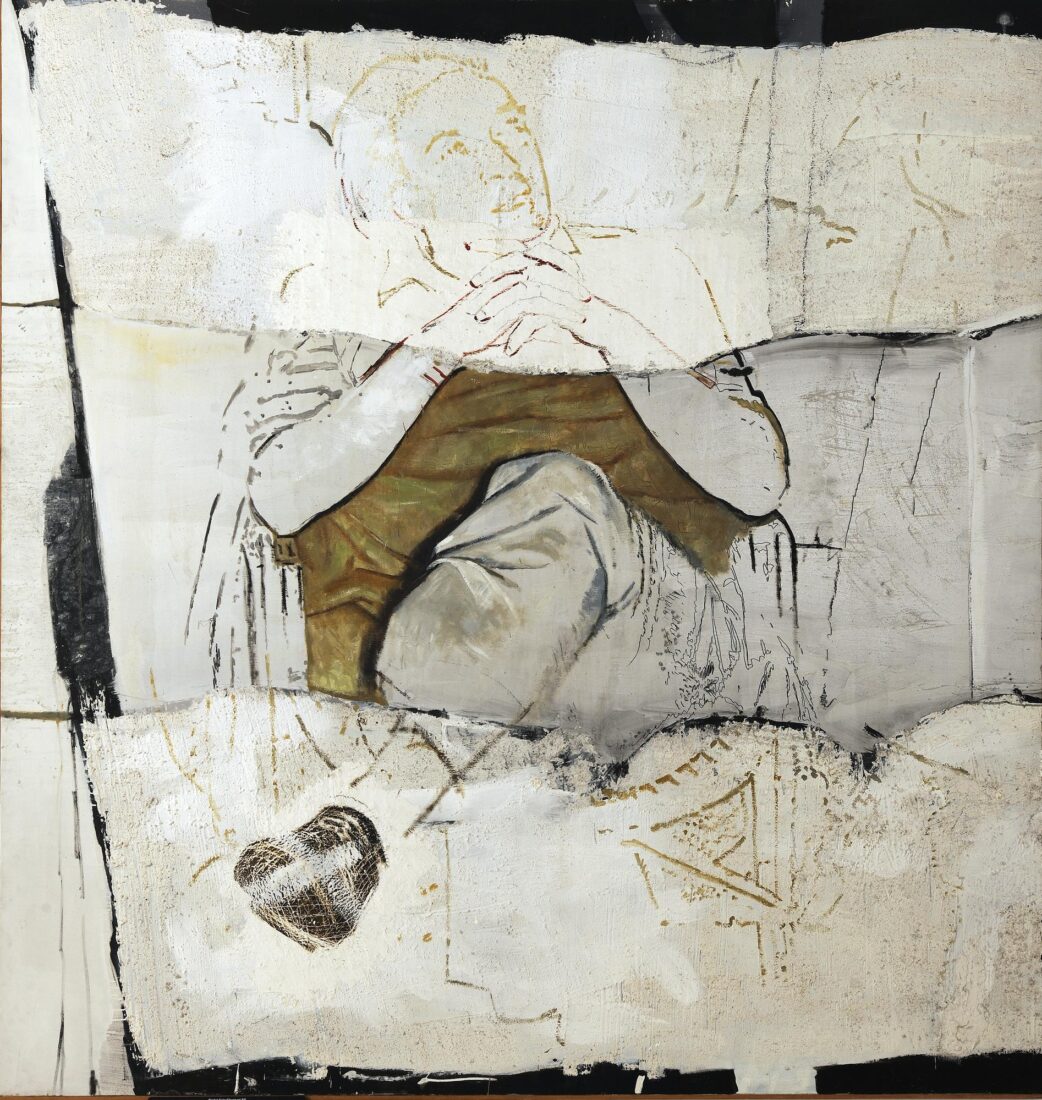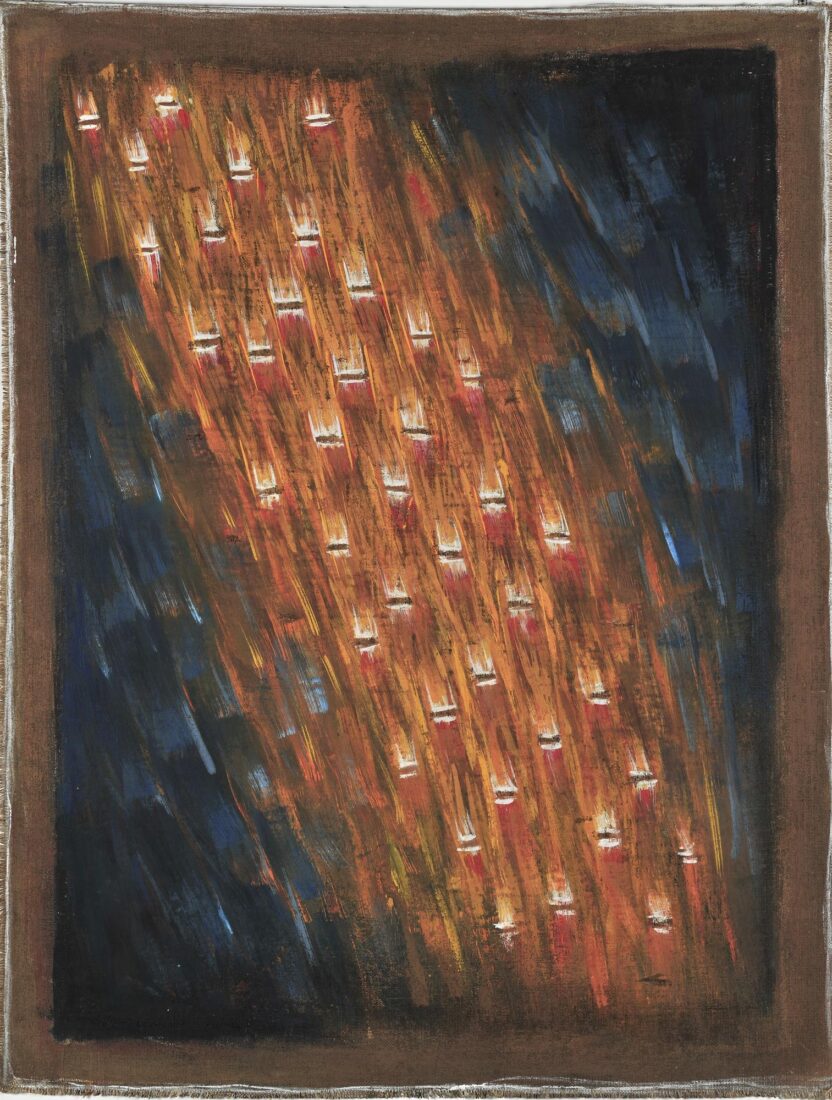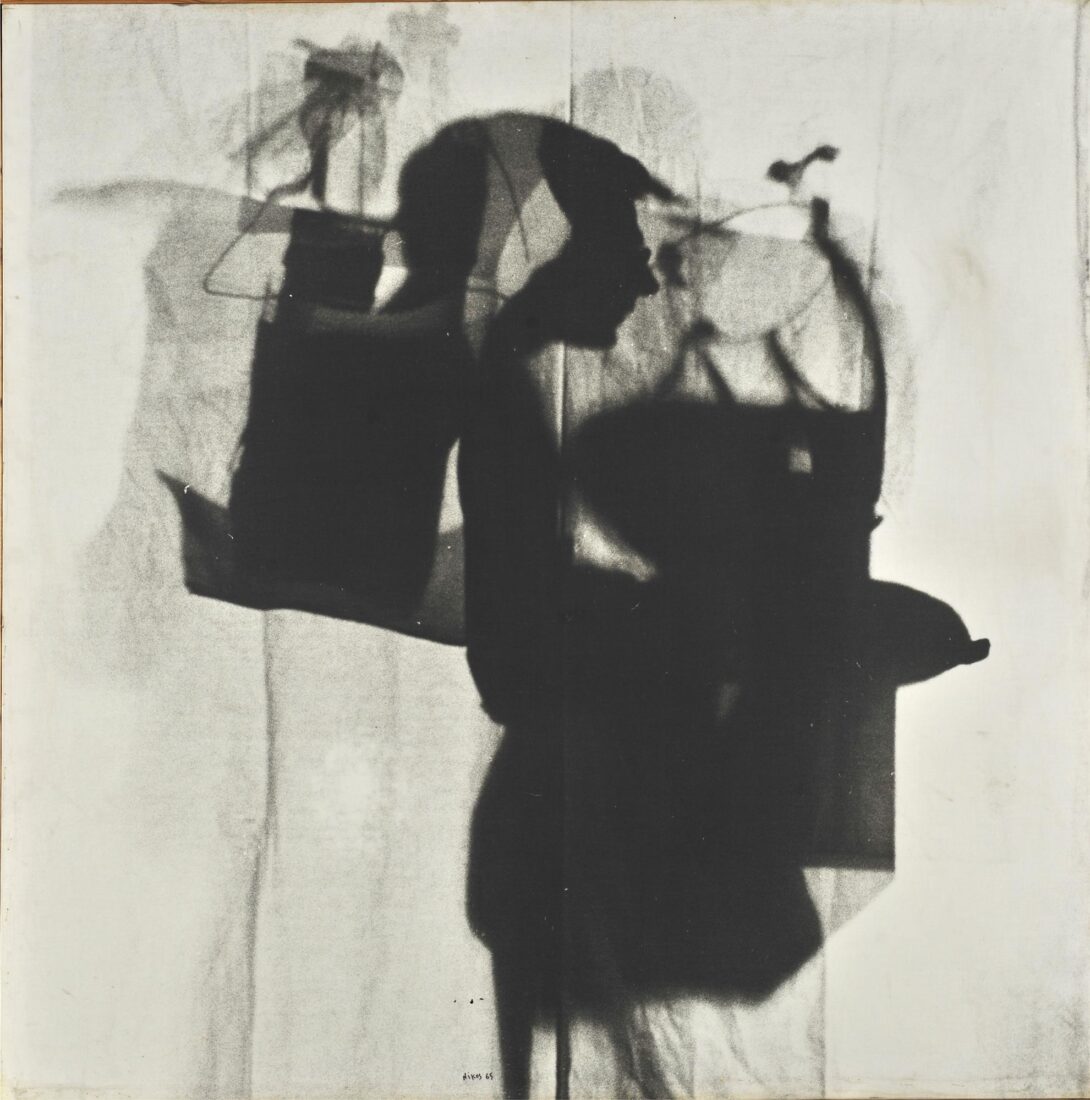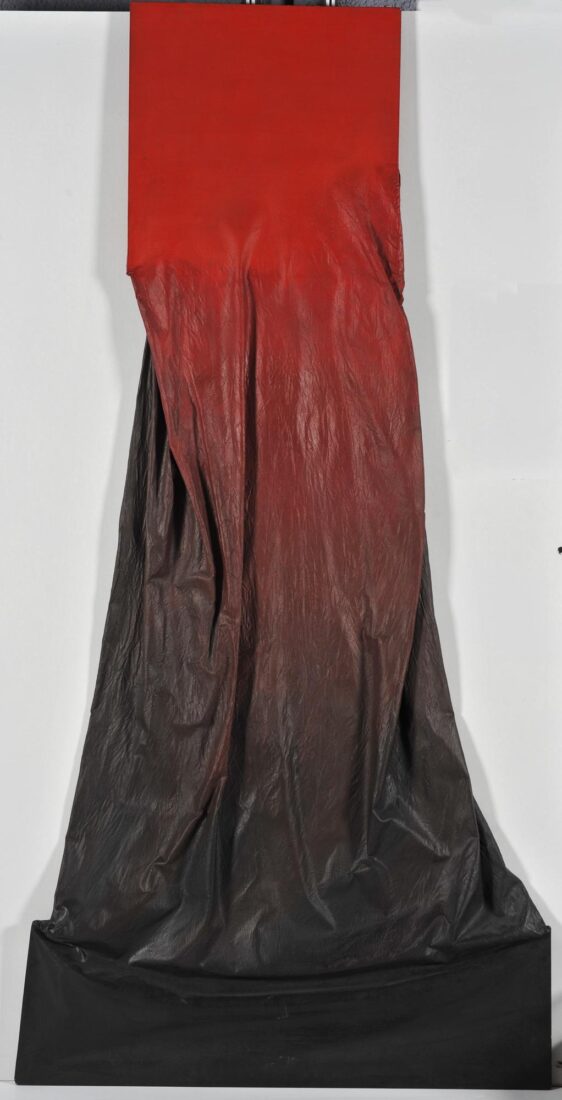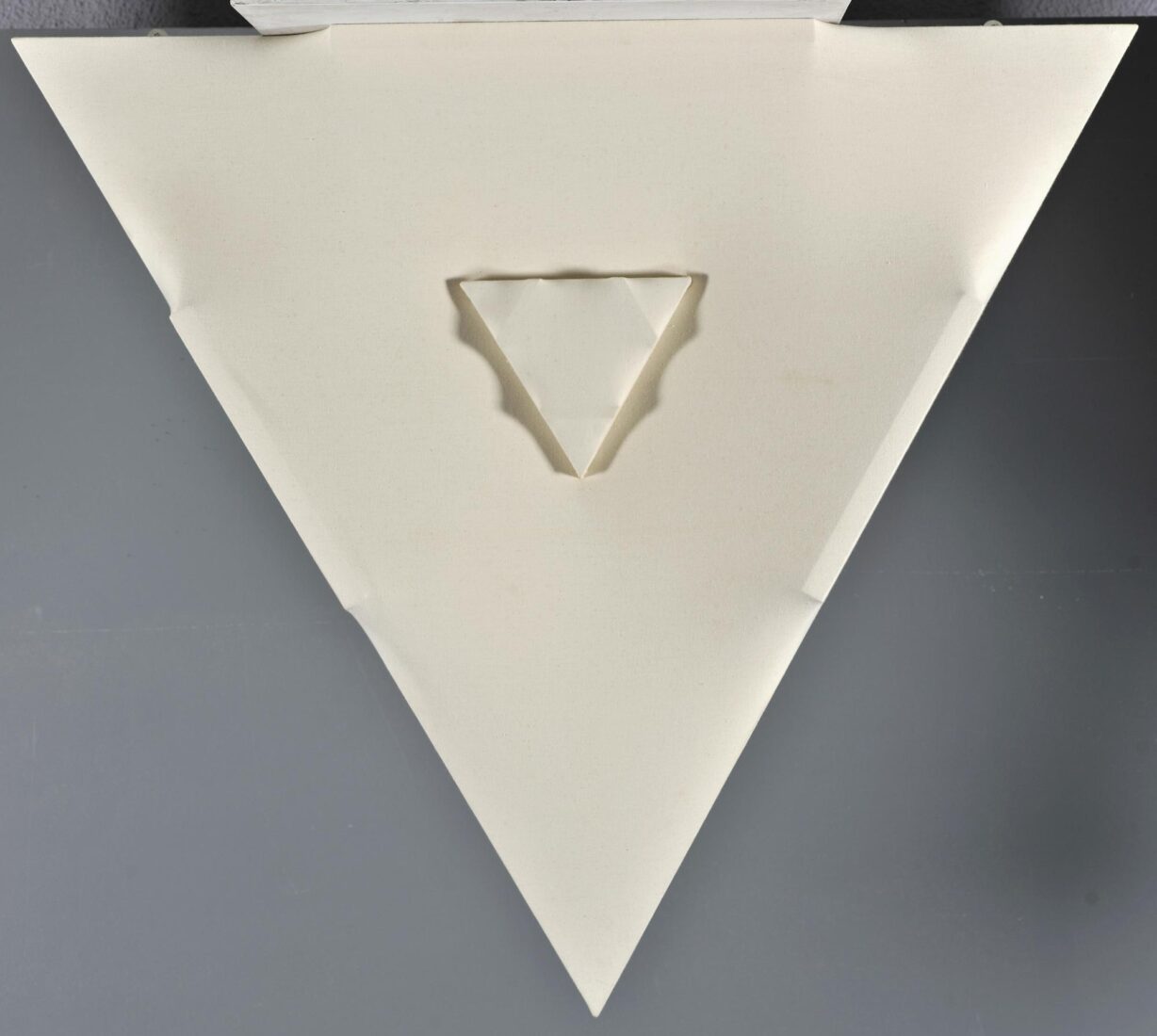

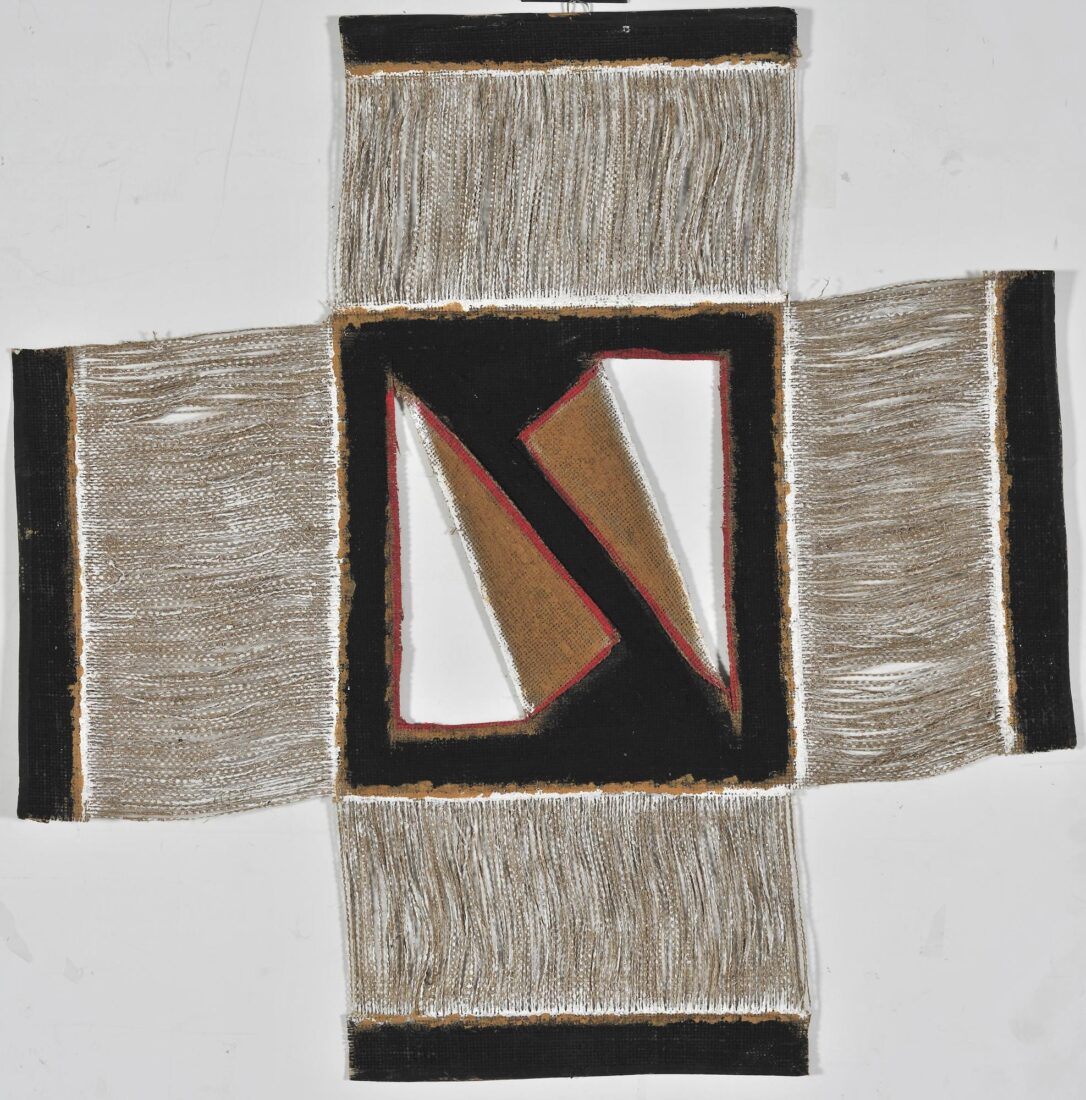
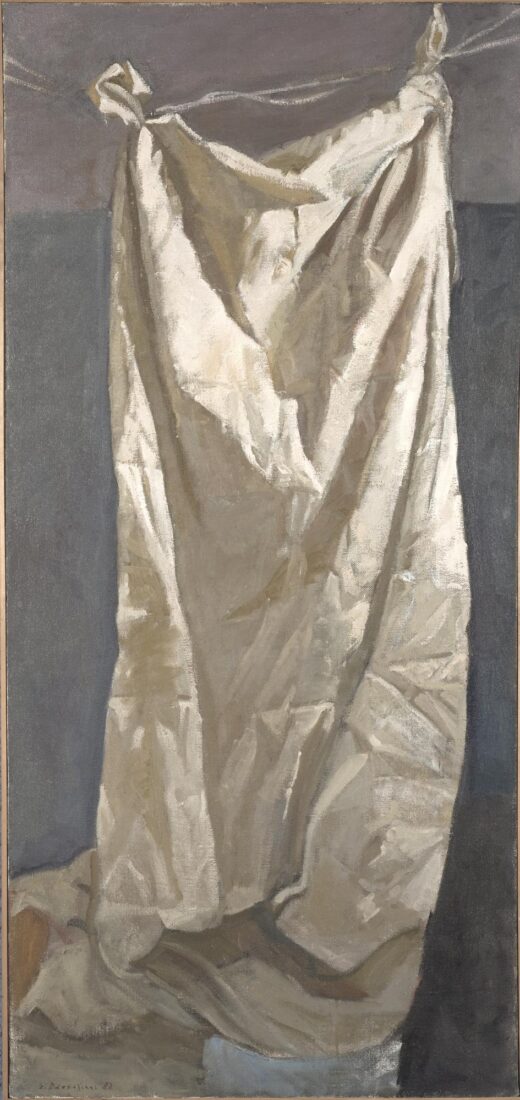

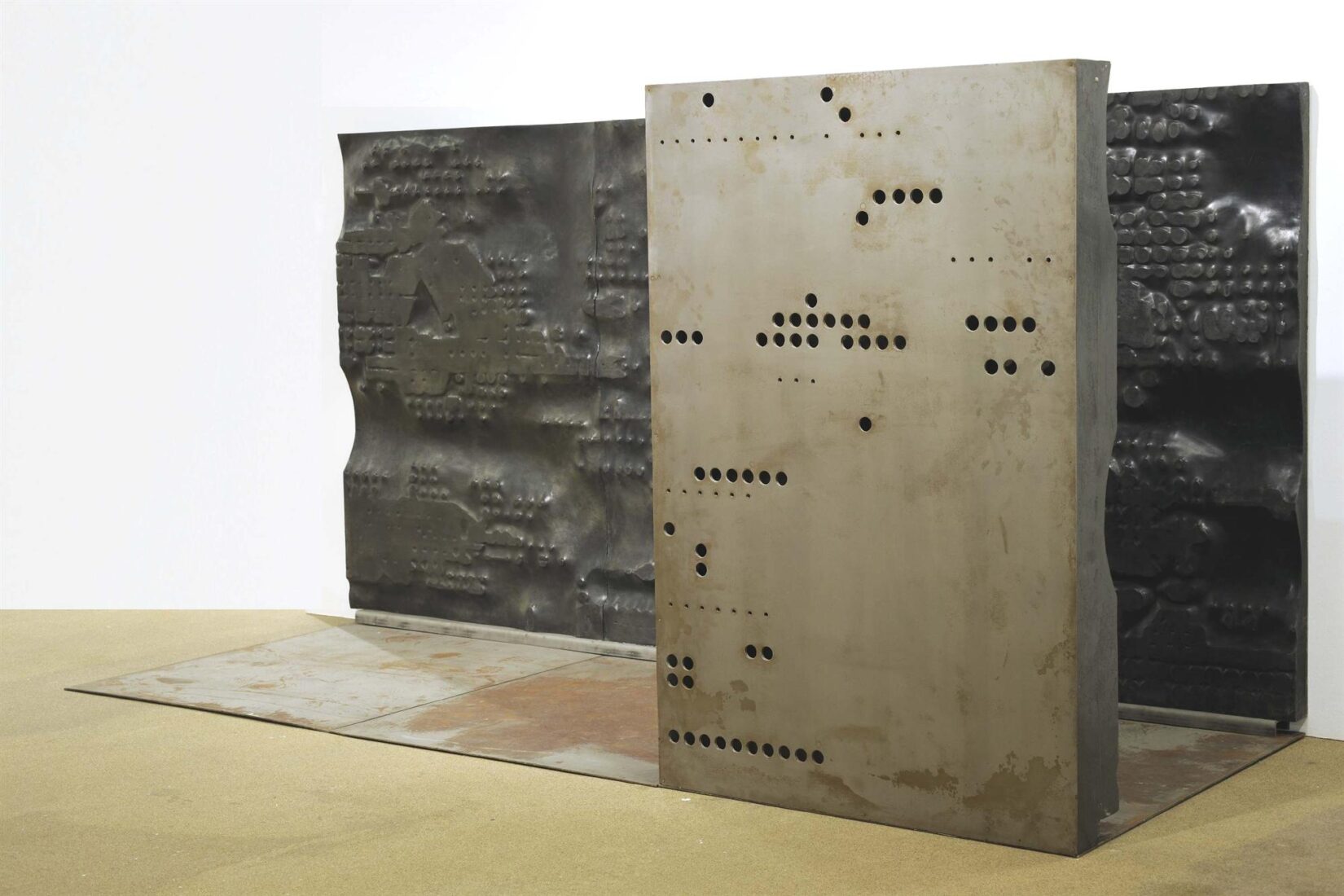
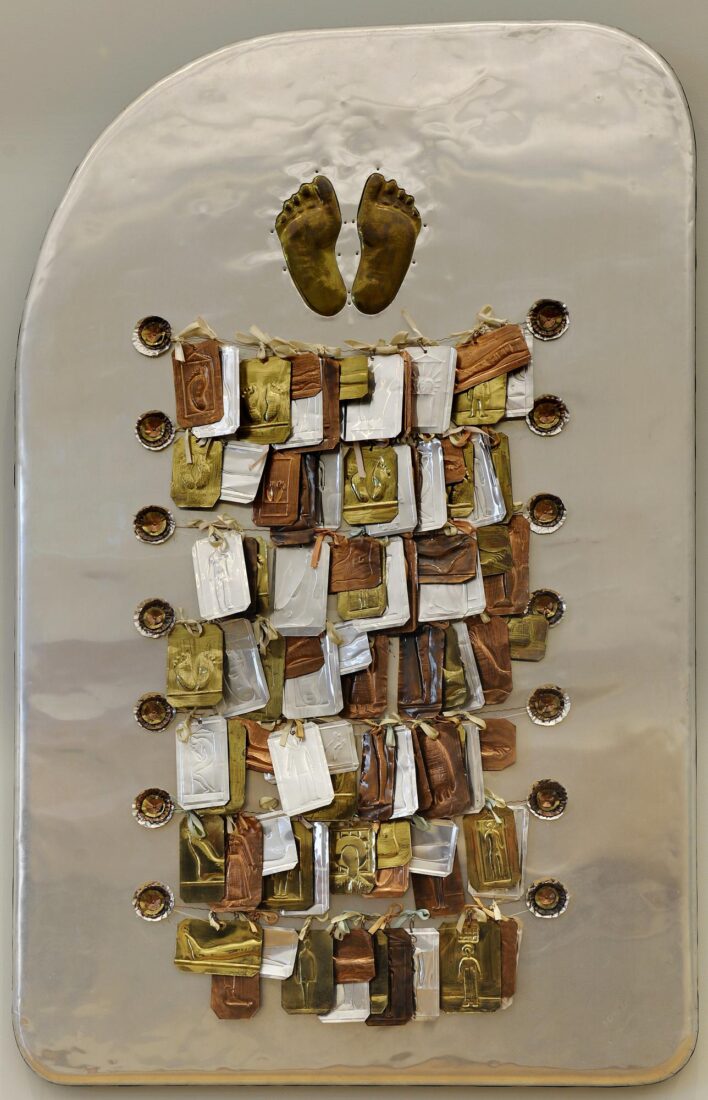
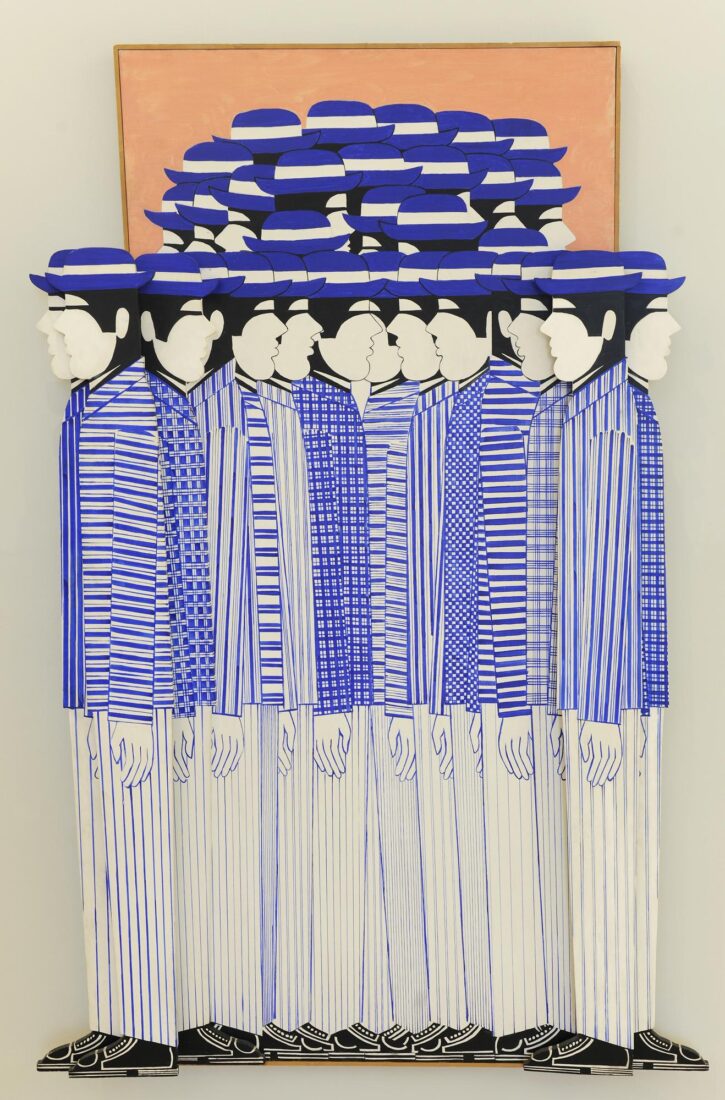
Yannis Gaitis is one of the most characteristic and original representatives of Pop Art in Greece. He was also recognized in France, where he lived for many years. Gaitis invented an archetypal stylized figure that was a concentration of the characteristics of a male inhabitant of mass consumer society. A standardized outline, black hair, a blue hat resembling similar figures painted by the Belgian surrealist Magritte, a striped or checked suit, all on a flat board of a body whose arms are stuck to its sides. This recognizable everyman became the trademark of Gaitis’ art. We see it multiplied and crowded together in many inventive compositions such as this piece, evoking today’s impersonal mass consumer society. Gaitis employed this archetypal symbol to formulate an acerbic social commentary through recognizable humorous and imaginative images that remained pleasing and decorative despite the unpleasant reality they condemned. The decorative striped and checked motifs and the limited but satisfying harmony of dark blue, light blue and white, which Gaitis used almost exclusively, contribute to the sense of euphoria that his work exudes.

![Le Moulin a Images [Image-Mill]](https://www.nationalgallery.gr/wp-content/uploads/2022/03/79141_2000_2000-675x1100.jpg)
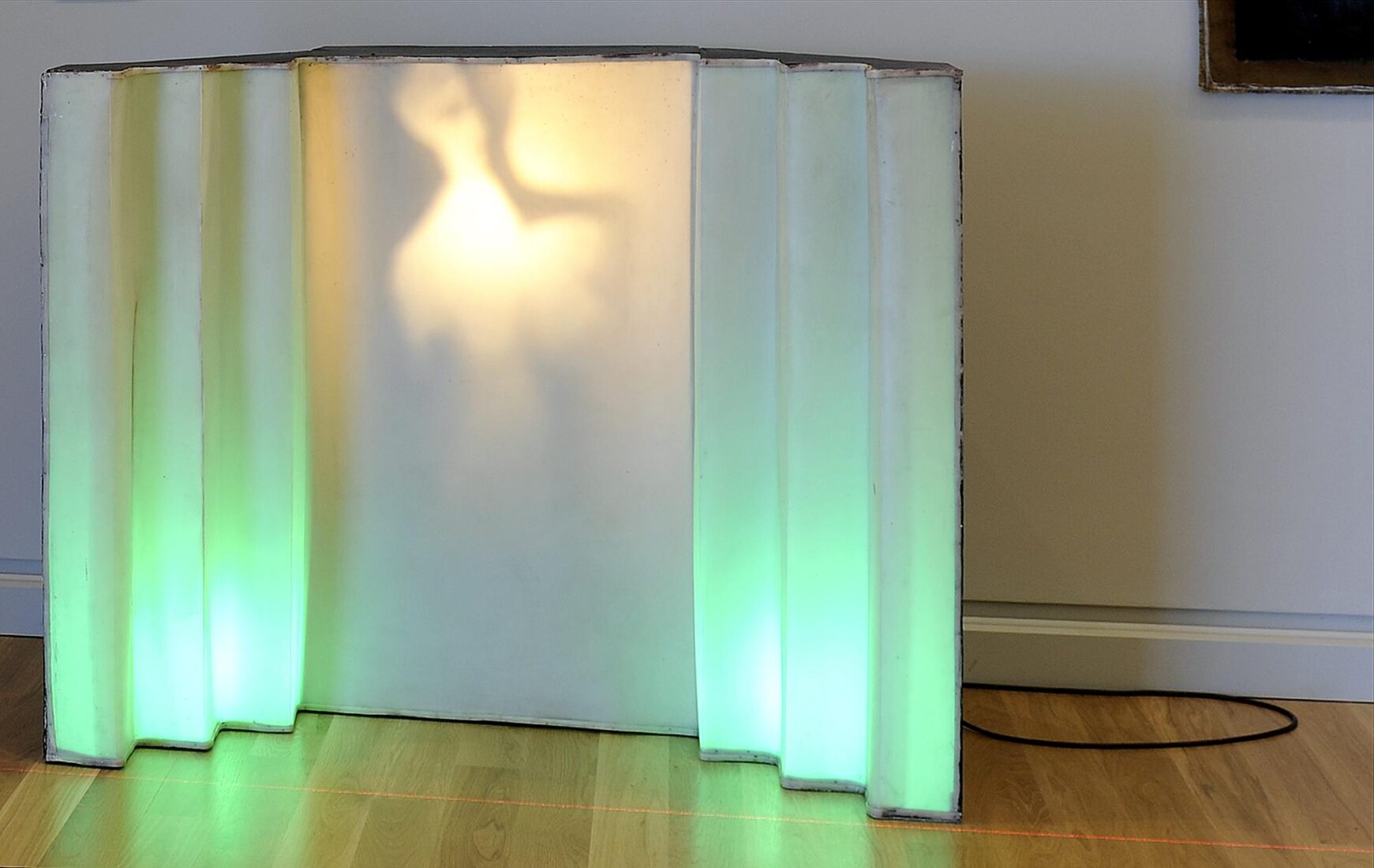
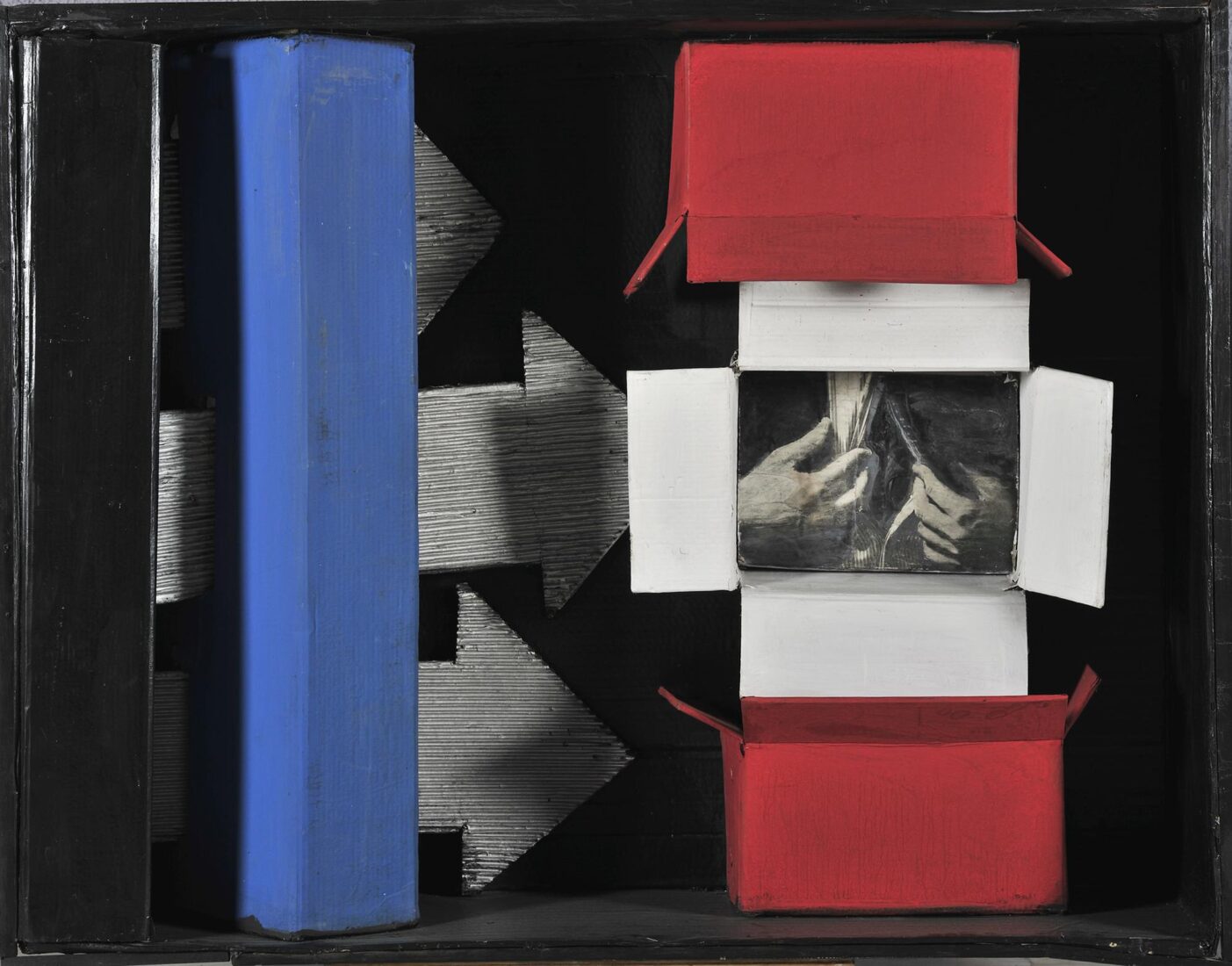
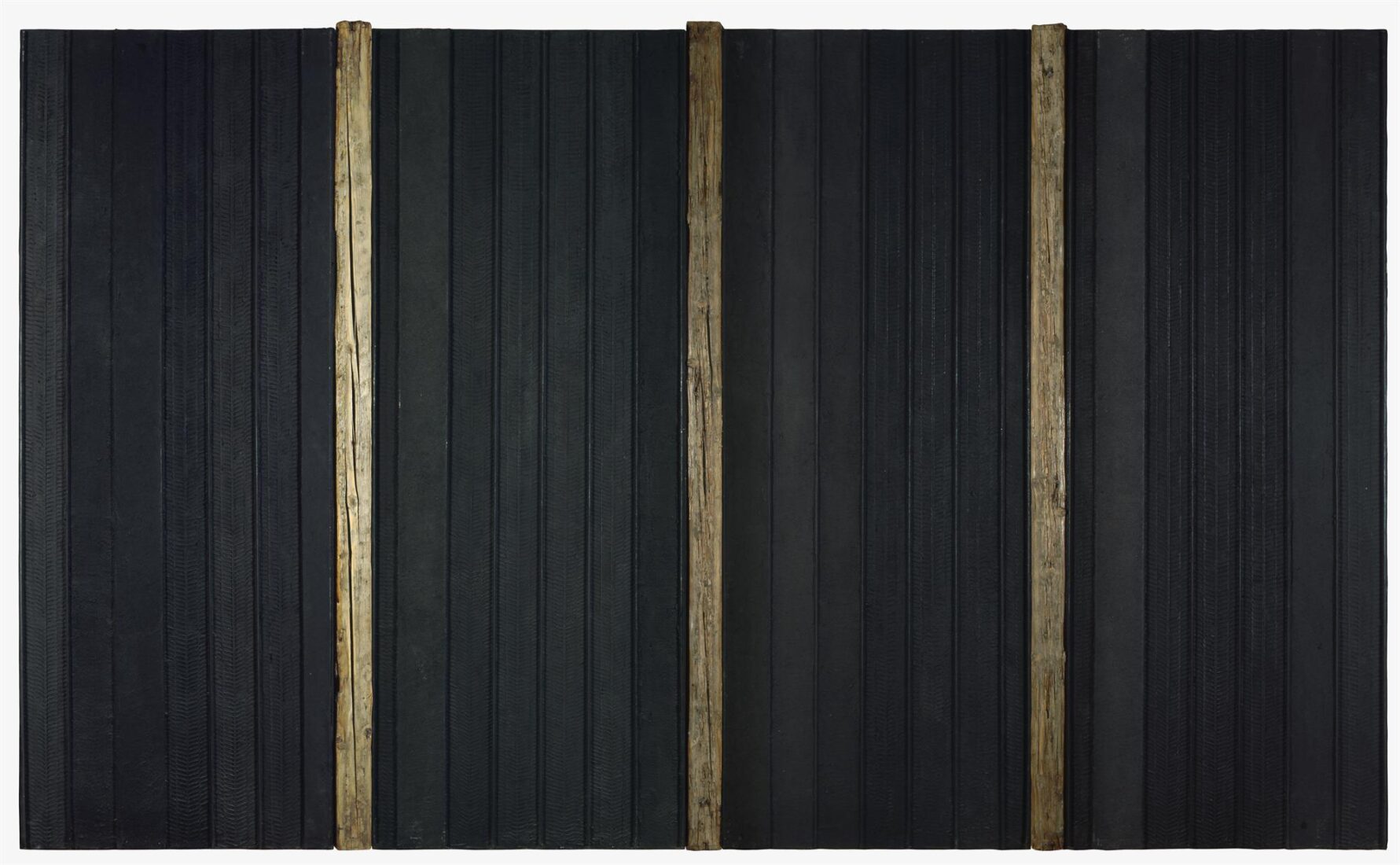
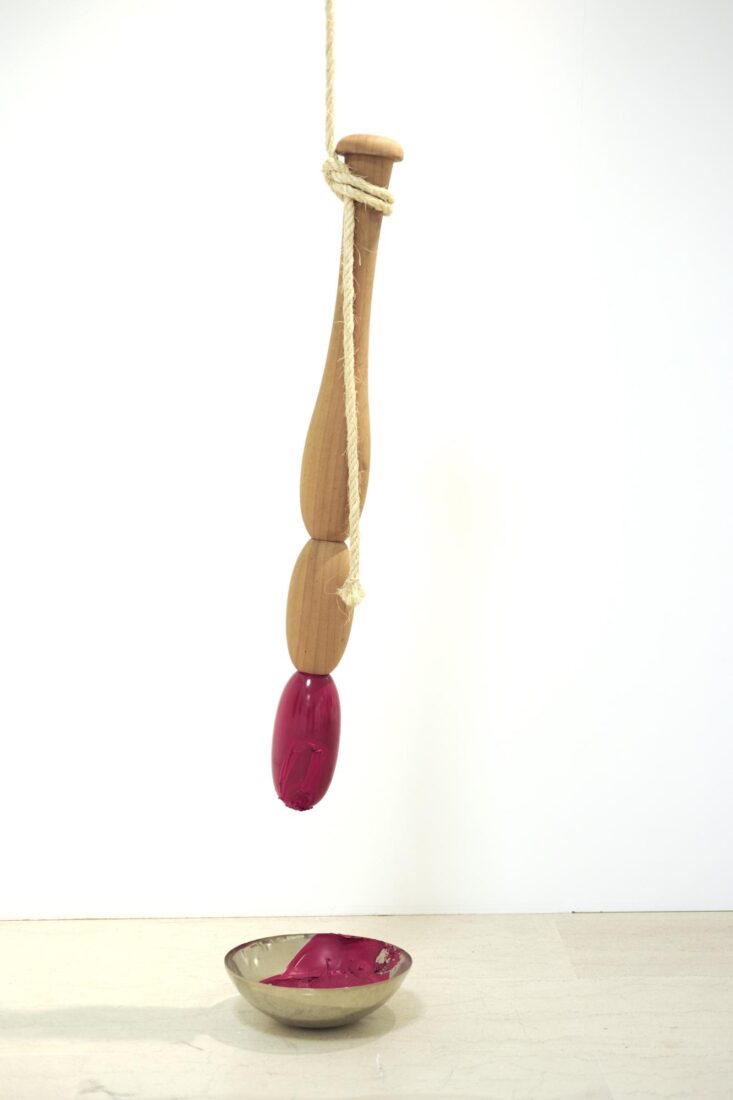
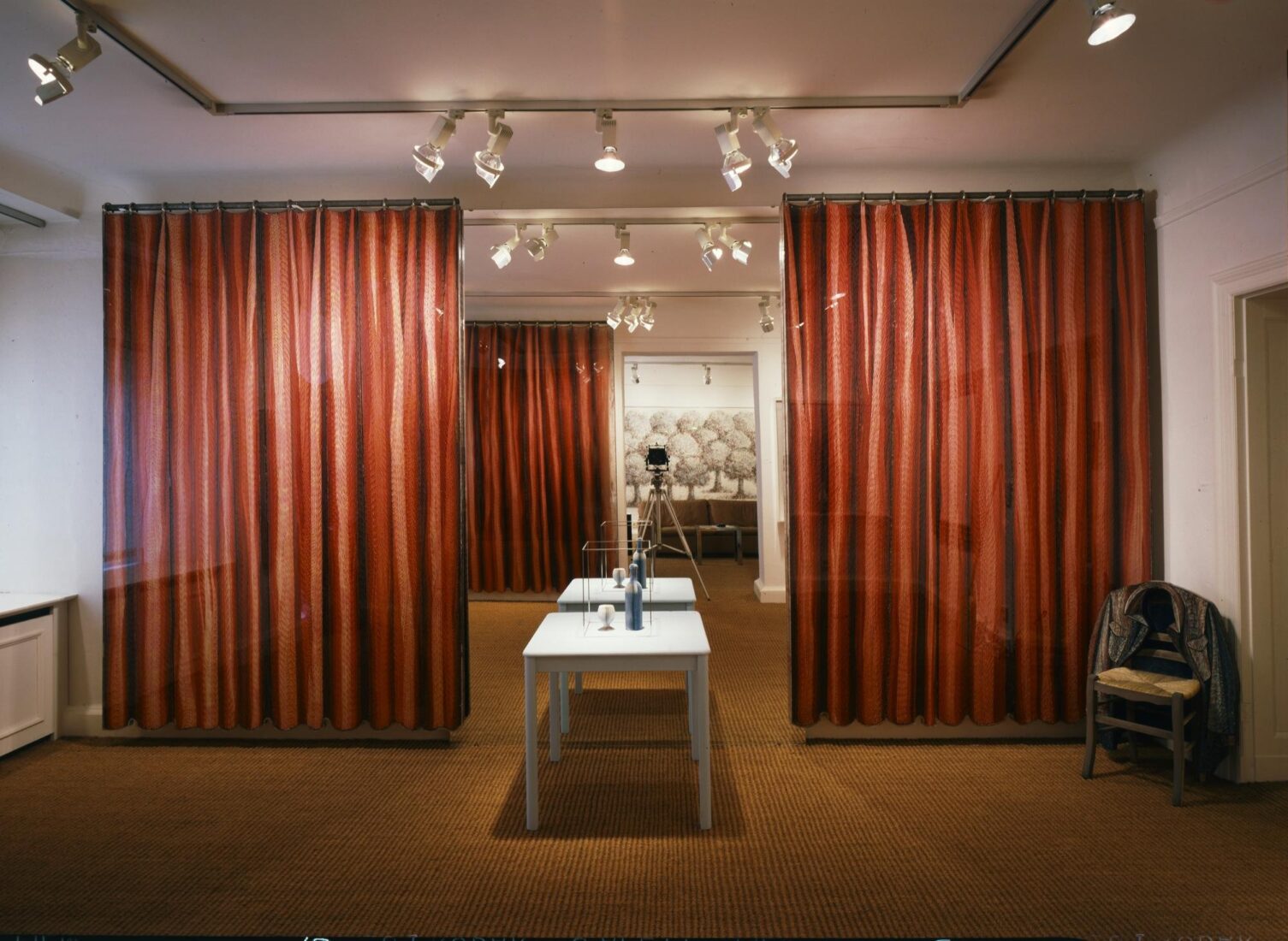
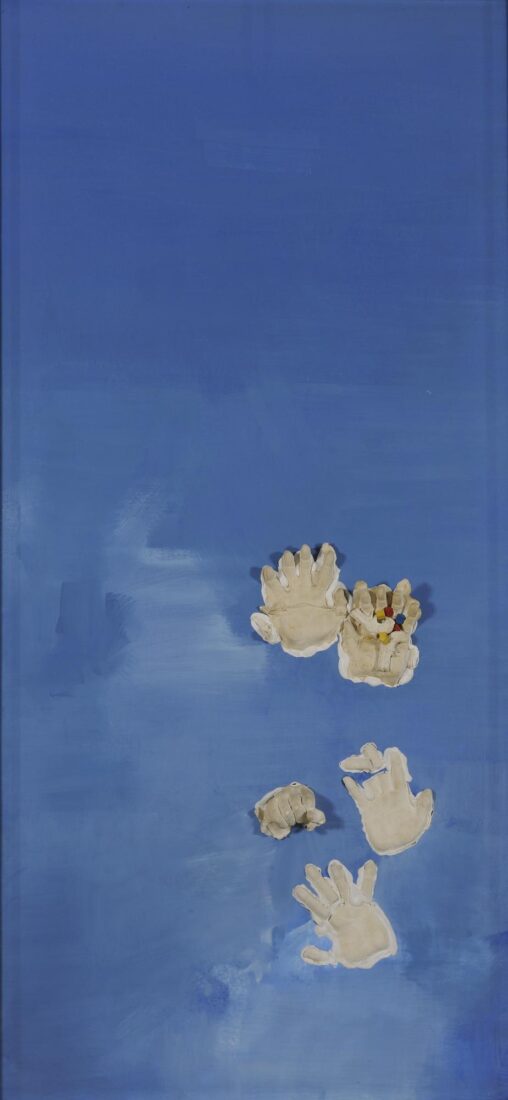
Vlassis Caniaris is one of the most daring and original representatives of the Greek avant-garde and has an acclaimed career both in Greece and in Europe (Italy, Paris, Berlin). After paying his early dues to painting on canvas, abstraction and collage, he took his art on to conquer three-dimensional space. Caniaris stages actions in a three-dimensional space with human figures as protagonists, thus giving a new dimension and sociopolitical meaning to Pop Art and Arte Povera. In Landscape, anxious hands, which seem to have come from casts, emerge from a sensitive painterly blue surface. They have ruptured the surface of the canvas and gesture either threateningly (clenched fist) or beseechingly, seeking not only a place in the sun but also the right to articulate their own discourse, to protest, in yet another Caniaris work with an latent political message.
